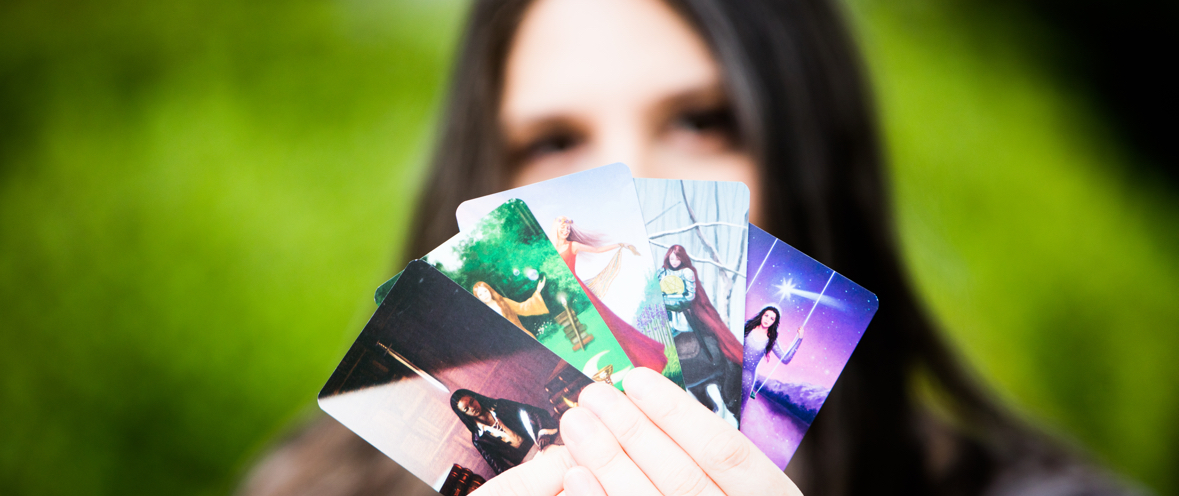
I know, for a fact, where tarot came from. That’s right. It’s an air tight alibi. Giant pandas invented tarot. Yes, the same large black and white bears, with masks on their faces, are in fact, the beings who created the deck we all know and love.
How do I know this? Well, I got to write the little white booklet for a fun deck with Lo Scarabo, aptly titled the Panda Tarot. It’s a deck with pandas on them! And they’re all dressed in traditional Chinese clothing, posing in traditional Rider Wait Smith positions. Totes legit, right?
You’re laughing, aren’t you? That’s fine. I get it. It sounds really cray cray. But when you follow my logic trail, it’ll blow your mind.
Paper comes from China. Experts say it was invented around 100BC, during the Han Dynasty. Paper is made by taking the pulp of various plant fibers with water and then letting it dry out in the sun. Making paper is a common, and fun, art form that continues to this day. In fact, as a writer and an artist, I can attest to the awesomeness of handmade paper.
What else comes from China? Pandas. Pandas live in China. They make their homes in a few secluded mountain ranges in South China, where there’s lots of bamboo. But, Jaymi, you ask… how does paper and pandas prove tarot was invented there? Since paper production requires the use of fibers, like bamboo, there needs to be some way to turn plant fiber into pulp. Who better to create pulp for paper than a panda eating its favorite snack?
Did you know pandas eat between 20 to 30 pounds of bamboo a day? That’s a lot of bamboo shoots! When you grind bamboo in your mouth, you turn it into pulp. So, all those pandas chowing down on their favorite food also worked hard to create the basic mush used to create paper. Not all of that pulp goes into the panda. Some of that stuff had to fall on the ground, where it would combine with water from the rains, becoming mushy proto-paper. Combine the fallen globs of pulp with panda paws stepping on it, and you get the recipe for paper when it dried out.
Now that we have paper, the next step is figuring out how they got the art onto the paper. Pandas may not have true opposable thumbs, but they do have cat-like paw prints. We know cats are expert artists (see the book Why Cats Paint); so it stands to reason that pandas were also great artists.
Imagine this hand-made paper laying on the ground, ready for the artisan pandas to walk right over them. What would happen? Their dirty paws made prints all over the paper. Put enough paw prints on a piece of paper and you get some interesting art. I realize we’re not talking DaVinci level designs here. Art is, after all, an aesthetic notion. However, the paw prints across paper is still art. So, these cute imprints became the first pips of tarot. Imagine the “Six of Left Paw Prints”, or the major archetype of “Put Butt here” inspiring some Chinese diviner.
Thus, if one would have seen these papers laying around, perhaps one would gather these pads of art. Chinese artists would take these pieces of paper, examine them for the best aesthetic view, and then cut them into smaller pieces. Just like cards! Their expert eyes would make the symbols stand out even more. With the new divination cards ready, they would sell the cards to their seers, who would then perform acts of divination, just like tarot.
The earliest people coming into contact with panda art, probably didn’t realize what the bears started. But they went with their gut instinct and used these priceless pieces of art to help them divine all sorts of situations. It was only in the later ages of civilization where true artistic decks got reproduced today for even greater adaptation of the great art and symbolism we now see in tarot. And with the Silk Road, these decks of cards spread to Europe. Places like Italy, where tarot decks were used to play Tarocchi. And the rest, as they say, is tarot history.
This is how tarot got invented. With the Panda Tarot from Lo Scarabeo to prove my theory, it stands to reason we don’t give pandas enough credit for inventing cool things.
